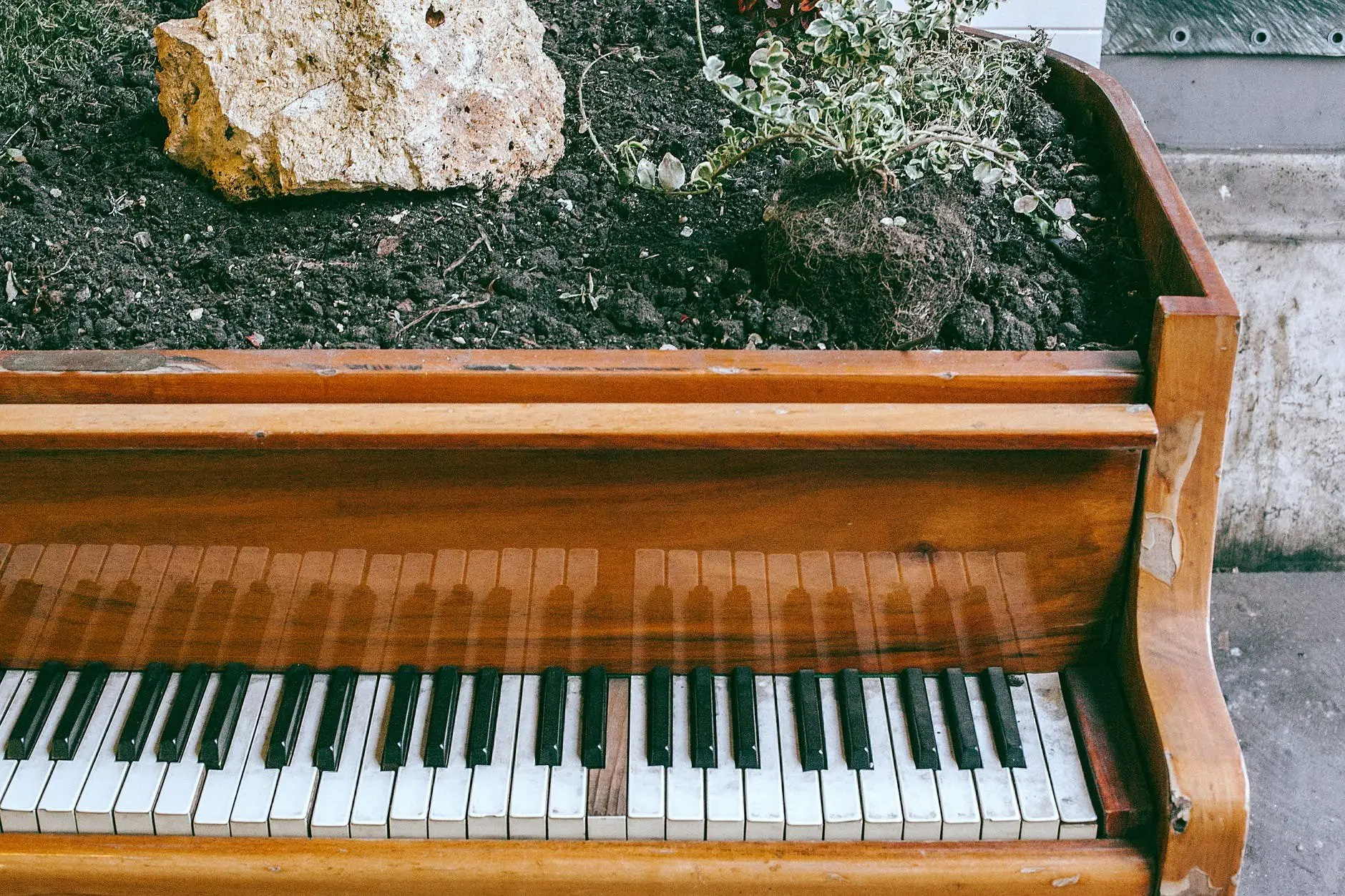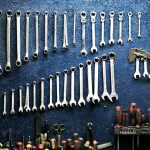After owning a piano for a particular while, some people notice a change in its pitch.
In case you don’t know, the word pitch refers to the type and quality of sound that your instrument produces.
It could be high or low.
Whether this change is small or dramatic, it is always noticeable.
As a result, you might get concerned about what’s wrong with your piano.
Is it broken?
Or are you losing your charm?
Don’t worry; it’s neither!
There are a few common reasons why your piano’s pitch might be changing.
Let’s discuss them and show you how you can fix it!
How Does A Piano Produce Sound In The First Place?

In order to fully understand how and why the pitch changes, you must first learn how a piano produces sound in the first place.
There are a few major components of its sound-production mechanism:
Strings
Your piano comprises strings that vibrate at specific frequencies and produce sounds.
The length, diameter, density, and tension of these strings determine the sound pitch they make.
Short, light strings under high stress vibrate more vigorously and produce a higher pitch.
Similarly, this mechanism is the opposite of low-pitched sounds.
However, don’t confuse pitch with volume.
Imagine a mouse’s squeak; it’s high-pitched.
The thunder you hear from the clouds is low-pitched.
Related: Check out this article I wrote on “Can playing the piano cause trigger fingers”
Hammers
When you press a piano key, a hammer strikes a string and produces a note.
Quite immediately, it separates from the wire, and the vibration stops.
Soundboard
This part is where the volume comes in.
The sounds that the strings produce aren’t as loud for everyone to hear it.
So, the soundboard does the job of an amplifier.
The vibration that the lines make travels through a bridge to a large wooden piece.
This thin wood is the soundboard.
Indeed, it has a significant role to play.
However, minor cracks in this region don’t affect the sound and tone quality of your piano.
These cracks often go unnoticed, and you don’t need to take major measures to resolve them.
Also check out this article I wrote on Can A Piano Be Stored in a Garage?
Dampers
A damper’s job is to stop the strings from vibrating.
When you lift a finger off a key, the corresponding damper falls on the wire.
The soft felt on the damper absorbs all the string’s vibrations, and the sound slowly fades away.
However, not all strings have a damper.
The highest ones usually don’t need it because their vibrational energy releases very quickly.
Hence, the sound stops in a short time on its own.
Pedals
The right pedal lifts all dampers together and allows you to sustain a bunch of notes.
In such a case, sounds continue even after you’ve released all the keys.
Plus, this mechanism stimulates vibration in the strings that you haven’t struck and allows them to become harmonic with those that you did.
Overall, the resultant sounds are richer and fuller.
The left pedal produces softer tones as it shifts all hammers and keys towards the right.
As a result, these hammers only strike a few strings, and since their contact area doesn’t reach the wires fully, they produce softer sounds.
Metal pedals sustain notes.
Whatever note you were playing when you pressed the pedal, it holds and sustains it.
On modern pianos, this middle pedal lifts the bass dampers.
In vertical pianos, middle pedals activate muting effects by pushing a cloth between the strings and their hammers.
Frame
A stable frame withstands the strings’ tension.
Most commonly, these frames are wooden.
How Does A Piano Change Pitch?
Now that you understand how a piano makes high and low-pitched sounds, you’ll find it much easier to learn how it changes the pitch.
String Tension
Since the strings are the primary elements of the piano responsible for generating a pitch, they majorly impact it.
When the lines stretch and change their tension, become old, or they’re very moist, they immediately change the pitch they produce.
New pianos have tense strings that stretch and settle with time.
As discussed above, taut strings produce a higher pitch, and the opposite is true for a looser wire.
So, when the strings lose their tension as they age, the pitch automatically changes.
The Soundboard And Humidity
Another significant way a piano changes its pitch is when the soundboard is too humid or too dry.
A piano’s soundboard is its main acoustic structure, and it’s entirely wooden.
If you know about wood, you would know that it quickly reacts to moisture.
As the humidity increases, the wood swells, and its shape changes.
The resultant effect is that the strings stretch out, and the soundboard becomes more crowned.
Since the lines become tenser, the pitch becomes higher.
Similarly, when the climate is dry, the soundboard’s wood flattens, and the strings’ tension lowers.
As a result, the pitch drops, and that’s how a piano changes its pitch.
Pitch Changing Devices
A piano can also change its pitch with the help of s pitch-changing device.
All you must do is put the output of your piano through the machine.
There are multiple different kinds of technology available for this.
Some devices allow you to make small changes to the pitch, while others can dramatically change the piano’s sound output.
You can choose one, depending on your personal preferences and requirements.
How Can You Reverse This Pitch Change?
If you want to prevent the unwanted, natural change in the piano’s pitch, tuning is a way to do that.
Tuning refers to maintaining the tension in the strings and, hence, maintaining the pitch of your piano.
You could do it yourself, but it’s always best to get it done by a professional.
Just make sure that you tune your piano at least once a year as the season changes.
As we discussed above, the changing climate can have a significant impact on your piano’s sound.
Thus, if you want to maintain the pitch or reverse the change, tuning is your best friend!
Frequently Asked Questions
1. How far from standard pitch must a piano be before a pitch raise is necessary?
Determining when a pitch raise or lowering is necessary depends on 3 important factors.
And these are – the accuracy of the final tuning, the size of the piano and the quality of the piano.
So realistically, a pitch difference of a few percent can be accommodated during tuning.
But when the piano’s pitch is noticeably different from that of other standard pitched instruments, then a [itch correction procedure is needed before tuning.
In my opinion, I will say anything from 5 percent of standard pitch should be corrected.
2.
Conclusion
So, in a nutshell, a piano changes its pitch due to natural reasons or artificial ones.
As the strings settle into the piano, they lose their tension, and the pitch changes.
Secondly, when the humidity increases, the wooden soundboard swells, stretches the strings and indirectly affects the pitch.
And if you want to change the piano’s pitch deliberately, you can do it using a pitch changing device.
All in all, if you wish to prevent the natural changes, make sure you tune your piano as any other stringed instrument!




7 Comments
Leave a Reply7 Pings & Trackbacks
Pingback:Can Playing The Piano Cause Trigger Fingers? – Music and Entertainment
Pingback:Can A Piano Be Stored in A Garage? – Music and Entertainment
Pingback:Can Piano Strings Break? - Music and Entertainment
Pingback:Can Piano Wire Cut You? - Music and Entertainment
Pingback:Can You Lay A Piano on Its Back? - Music and Entertainment
Pingback:How Much Does A Piano Tune Cost? - Music and Entertainment
Pingback:Does a Piano Need Electricity? - Music and Entertainment